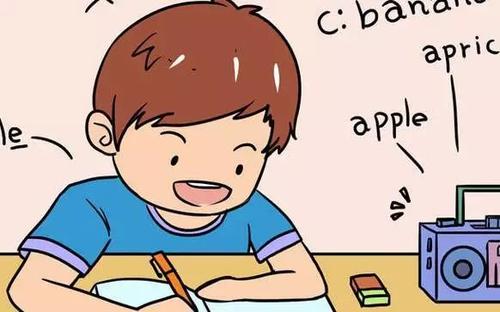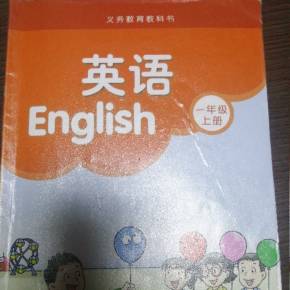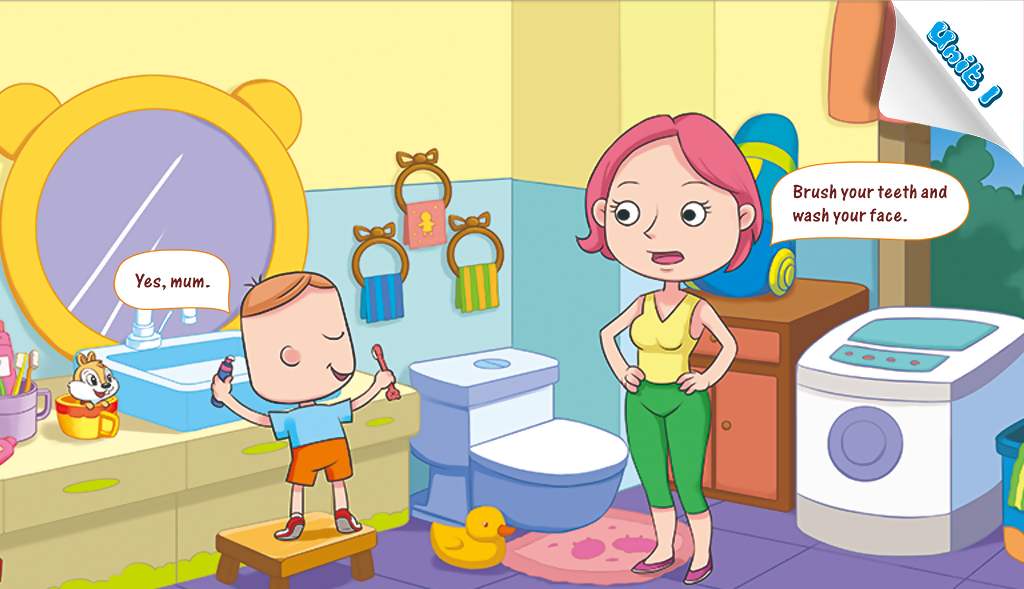生活对于任何一个人都非易事,我们必须有坚韧不拔的精神,最要紧的,还是我们自己要有信心。我们必须相信,我们对每一件事情都是有天赋的,并且,无论付出任何代价,都要把这件事完成。课件网小编高二频道为你整理了《高二必修二英语教学设计人教版》,希望对你的学习有所帮助!

【高二必修二英语教学设计人教版一】
教学目标
Teaching Aims and demands 本单元通过学习马克·吐温的《百万英镑》并改编成短剧形式的课文,学生能初步了解作者的风格。学生应能在教师的指导下,排演这个短剧。通过对话课的学习与操练,学生接触表示坚持个人意见的常用语句,并要求学生运用到实际会话中。学习并初步掌握as if和no matter引导让步状语从句的用法。 Teaching important and difficult points 1.单词 run, choice, note, change, fool, order, pleasant, right, assistant, customer, foolish, insist, tailor depend, favo(u)r , apologize, excited 2.词组 shop assistant, a clothes shop, give back, or else, change…for …, in the sun, try on, depend on, take place, get off, put on, drop in, once upon a time, do up, in fact, keep back, play the part of, next to 3.交际用语 There seems to be something wrong with it. I would like you to change this blouse. You sold me a blouse that I can’t use any more. I am afraid I can’t do that right now. Why can’t you do something about it? Is anything the matter? 4.语法 学习as if和no matter的用法。
教学建议
课文建议 在Lesson 38课,建议教师应组织学生1)以节目的形式演出这段对话。2)教师可选取录像或多媒体形式完成此课的教学任务。3)教师把学生分成三人一组,适当准备一些道具排演本课的最后结局的短剧。4)教师要求学生找出能刻画服装店老板人物特征和心理变化的相关语句。如:There’s a customer, Tod, Will you serve him? / No matter what he is wearing , Tod, just show him the cheapest./Come, come. Get him his change, Tod..
对话分析 本单元对话是讲述在服装店调换衣服的经过,学生对其内容较易理解,但一些新单词的用法应掌握,如:customer, run, insist, change…for…。本课中也提供了给学生做相应对话的练习,如:A pair of trousers, A radio的口语练习。
教学重点难点 1.serve的用法
1)serve(sb.) as sth.表示“为(某人)工作,(尤指)当佣人”。 He served as a gardener and chauffeur.他做园艺工人兼司机。 2)serve还可表示“供职,服役”。 He has served his country well.他为国尽职。 3)serve sb. (with sth.). 表示“将(饭菜)端上桌。” Four waiters served lunch for us.有四位服务员招待我们吃午饭。 4)serve 还可用于“(在商店等处)接待(顾客)或为顾客取货物”的意思中。 Are you being served?有售货员接待您吗? He served some sweets to the children.他为孩子们拿来了他们想要的糖。 5)serve 还指“(一份饭)够……”。 This packet of soup serves two.这包汤料够两个人食用。 2.judge的用法 1)judge用作动词,表示作“断定,估计,认为”解。其后可带宾语从句,也可带不定式或形容词、名词等引导的宾补成分。 We judge that they have finished.我们估计他们已经干完了。 We judge them to have finished.我们估计他们已经干完了。 She judged him about fifty.她估计他在五十岁左右。 The committee judged it better to start the investigation at once.委员会认为立即开始此项调查。 From his letter, we judged his visit to China a great success.从他的来信判断他对中国的访问非常成功。 2)judge用作“判断,断定”解时,还可接wh—分句或wh—加不定式结构。 I can’t judge whether she was right or wrong.我不能断定她是对还是错。 3)judge还可表示“评判,评价”,可说judge sb. / sth. Don’t judge a man by his looks.勿以貌取人。 4)Judging by / from…(从……来看,据……来判断)是惯用短语,可用来引导独立分句。 Judging from his looks ,he may be sick.从外表看,他或许生病了。 Judging by his accent, he must be from Guangdong.听口音,他准是个广东人。 3.get off的用法 1)get off意为“脱下”。 It’s rather hot today, we must get off the jacket.今天太热了,我们必须脱下夹克衫。 2)注意:get off还可作“下车”;“离开”;“出发”;“起飞”解。 As soon as I got off the bus, I started for the village on foot. 我一下公共汽车,就开始步行到村里去。 We must get off at once or we' II be late我们必须马上走,否则要迟到了。 We got off immediately after breakfast.我们一吃过早饭就出发了。 The plane got off on time. 飞机准时起飞。
4.favor的用法 1)in favor (of )表示“赞成、主张”,常用作表语或后置定语。 The students were in favor of reform. 学生赞成改革。 2)do sb. a favor或do a favor for sb. 是个正式的礼貌用语,意思是 “给某人以恩惠,帮某人的忙”。 Would you do me a favor? 帮我一下好吗? Do me a favor by turning off the radio. 帮我把收音机关掉。 Do me the favor to come. 务请光临。 注:do sb. a favor后接of doing 或不定式时,应将不定冠词a改为定冠词the。
5.put down的用法
1)意为“写下;记下”。 Put down your name and your telephone number.写下你的名字和电话号码。 Put this down in your notebook for future reference.这点记在你的笔记本上,以供今后参考。 2)可作“*;扑灭”。 The fire was finally put down by the firemen.大火最后终于被*员扑灭了。 6.as if的用法 as if 是连词词组,作“好像”、“好似”解,引导表语从句,用于下列句型中: It looks/seems as if ....表示“看起来似乎……”。其中It为无人称代词,本身并无词义。looks / seems是连系动词,as if引出表语从句。 It looks as if it is going to show. 看来,要下雪。 It seemed as if the suit was made to his own measure. 这套衣服看来似乎是按尺寸给他定做的。 除此之处,as if也可以引导方式状语从句,修饰主句的谓语,此时从句中的谓语动词常用虚拟语气。关于这一点,暂可不必向学生交代。 The woman loves the children as if she were their mother.这个妇女爱这些孩子,她好像就是他们的妈妈一样。
7. no matter 的用法 no matter作“无论”、“不管”解,用以引导表示让步的状语从句,常用在下列句型中: 句型中的No matter what (who/when etc.)...分别表示“无论何事”、“无论何人”、“无论何时”等,这个从句可以置主句之前,也可以置主句之后。 由no matter + what等引导的让步状语从句。No matter后面接关系代词或关系副词引导状语从句在句中作让步状语。 No matter what you do, you must be very careful.不管做什么事,你都必须非常细心。 No matter之后可用what以外的关系代词或关系副词。例如: No matter who you are (=Whoever you are), I’ll never let you in.无论你是谁,我绝不让你进去。 No matter which…无论哪一个…… No matter which you choose(=Whichever you choose), you will be satisfied.不论你选择哪一个,你都会满意的。 No matter where…无论何处;不管在哪里…… No matter where I go (=Wherever I go) , I will be thinking of you. 无论我到哪里,我都会想着你。 No matter when …无论何时,不管什么时候…… I’ll discuss it with you no matter when you like(=whenever like). 你什么时候高兴,我愿意同你讨论这件事。 No matter how..不管……如何;无论……多么…… No matter how hard you try(=However hard you try), you will never be successful. 不管你如何努力,你都不会成功的。 8.drop in, drop in on 与drop in at的区别 drop in 意为“顺便走访” He often drops in for tea. 他经常顺便来喝茶。 drop in on 后接人意为“顺便拜访某人”。 She dropped in on me yesterday. drop in at后接表示地点的名词意为“顺便来(去)某处看看”。 Tom usually drops in at my place on his way home. 答题时要注意drop in后所接的名词表示的意思。 Jane used to ____ the tailor’s on her way home from work. A. drop in B. drop in on C. drop in at D. drop at 詹妮以前常下班后去成衣店看看。the tailor’s 表示地点,故正确答案为C。
9.run的用法 1)表示“跑,奔跑,赛跑”。 The boy ran off as soon as we appeared.我们一来,孩子们都跑了。 She used to run when she was at college.在大学时她经常练跑步。 2)run还可表示“(火车、汽车、轮船等)往来行驶” Buses to Oxford run every half hour.去牛津的公共汽车每半小时一班。 The trains don’t run on Christmas Day.圣诞节火车停驶。
3)run可用业表示“(液体)流动”。 Could you run me a hot bath?你给我放盆热水洗澡好吗? Your nose is running.你又流鼻涕了。 4)run表示“(衣服上的染料或颜色)掉色,扩散”。 I’m afraid the color ran when I washed your new skirt.很遗憾, 我洗你那条新裙子的时候它掉色了。 5)run可表示“融化”。 It was so hot that the butter ran.天太热,黄油开始化了。 The wax began to run. 蜡开始融化了。 6)run还可表示“负责、经营、管理”。 He has no idea of how to run the successful business.他不知道把企业办好的方法。 Stop trying to run my life for me.我的生活用不着你来管。 10.Come, come. Get him his change. Tod. ( = Hurry up. Tod, Give the man his change.) 得了,得了,给他找钱吧,托德。 句中的come用作感叹语,表示“劝导”,“不耐烦”的情绪。come作感叹语用时,在不同的情况下,可以表示不同的感表,如“鼓励”、“惊异”、“命令”等。例如: Come, come, Alice, you must be patient. 好了,爱丽丝,你得忍耐点。 本句中的change是不可数名词,作“零钱”,“找给的钱”解。又如: Here is your change. 这是找给你的零钱。 change还可以用作及物动词,作“零钱”,“换钱”解。 Could you change a 10-yuon note, please? 你能换开10元钱吗?
教学设计方案Lesson 37
Teaching aims 1. Practise in pairs talking about buying clothes in a shop.
2. Study the language points in lesson 37.
Teaching procedures
StepⅠRevision
1. Check the homework exercises.
2. Revise articles of clothing by asking questions. Get as many as possible from the students and write them on the blackboard.
Questions for the teacher to ask the students:
1) What words have you learned about clothes ?
trousers, coat, jacket, shirt, overcoat……
2) What color do you like best if you buy a blouse ?
a gray one, red one, blue one, black one, yellow one, white one ……
Step Ⅱ Warming-up
Look at the picture on P 55.
1. Ask the students to say something about the picture. Let the students know a new word: blouse.
Answer: It’s a clothes shop. There are many clothes in the shop. Two women are talking now. They are talking about the white blouse and the red blouse in the shop.
2. Ask the students how different clothes are washed. Make a table on the blackboard if you like
as follows:
HOT WASH white cotton
WARM WASH coloured cotton
COLD WASH silk , wool
Step Ⅲ Listening and reading
Let the students listen to the dialogue once or twice and then answer same questions.
1. What did the customer buy last week?
… She bought, a blouse last weds
2. What's wrong with the blouse?
… When doe washed the blouse, the color ran.
3. What did the customer ask the assistant to do?
…She asked the assistant to change the clothes or give the money back to her.
4. Did the assistant give the money back to the customer ? Why ?
…No, because the manager of the shop wasn't in. And the assistant couldn't decide whether to give it back to her or not.
Step Ⅳ Practice
Let students fill in the blanks of the dialogue.
SA: Good afternoon. Can I 1 you ?
C: Yea, please. I 2 this radio the day before yesterday. But there is something 3 with it. Last night it just couldn't. I 4 can't use it.
SA: Let me 5 . It scans as if it hasn't been 6 properly. Has it been left in the sun or__ 7_?
C: Of 8 not. How can I be 9 foolish ?
SA: 10 it's the 11 of the factory that made it. I think I will send back to the 12 and get it repaired.
C: You may 13 it back to the factory, but I would like my money 14 .
SA: I’m 15 I can't do that.
C: Why can't you do 16 about it ? I'd like you to change this 17 or else 18 me my money back.
SA: All right. You can 19 it for another one. Would you please 20 a look at these ones ?
Answers:
1. help 2. bought 3. wrong 4. work 5. see 6. used 7. rain 8. course 9. that 10. Maybe 11. fault 12. factory 13. send 14. back 15. afraid 16. something 17. radio18. give 19. change 20. have
Fill in the blanks.
1.这台收音机有问题吗?
Is there ______ _______ ________ the radio?
2.请把借我的书还我。
Please give me _______ the book that you _______from me.
3.天看上去要下雪了。
It _______ as if it’s going to_______.
4.他坚持要明天去那儿。
He _______ that he _______ there tomorrow.
5.别让孩子站在太阳底下。
Don’t _______ the child stand ________ the sun. 6.我想让汤姆的弟弟去做那项工作。
I would _______ Tom’s brother ________ do the work.
Answers
1. anything wrong with 2. back …borrowed 3. seems…snow 4. insists …go 5. have/ keep …in 6. like …to
StepⅤ Language points
Let students read the dialogue and ask them to pay attention to some key sentences and then the teacher gives some brief explanation.
1. There seem (s) to be…
2. like常见的句型是
like sb. to do sth./ like to do sth./ like doing sth.
3. I’m not that foolish = I am not so foolish.
4.It looks as if + 句子 = It seems as if + 句子
5. insist + that - clause + ( should ) + v
Step Ⅵ Further practise
1.Get good pairs of students to act out their dialogues in front of the class without their books if possible.
2. Provide a few situations for the Ss, let them practise the dialogues by dividing the different groups.
1)You have just bought a pair of shoes from a shoe shop. But later you find that the shoes are not of the same size. So you go to the shop again. Make a dialogue between the shop assistant and you.
2) You have just bought a tape—recorder. But it does not work as soon as you get home. So you go back to the shop and ask for a new one..
Step Ⅶ Exercise
Do exercises Ex 1——3. on Page 118.
A customer brought a blouse in a clothes shop last week. She found that the colours _____when she washed it. Thinking that there must be ______wrong with it, she went back to the shop. The shop_____ asked her whether she did not follow the ______and washed it in hot water. The ______said she was not ______foolish. It seemed that it was the ______of the company that produced it .The customer _______that the shop should give her money back, but the shop assistant refused. Finally the customer decided to change the blouse _______another one.
Key:
ran, something, assistant, instructions, customer, that (so), insisted, fault, for
StepⅧ Homework
1.Do exercises Ex 2——3. on Page 118.
2.Get the students to do the vocabulary preparation in Lesson 38 .
教学设计方案Lesson 38
Teaching Aims 1. Learn lesson 38 to get brief idea of the story.
2.The students are required to answer some questions.
Step I Revision 1)Check the homework exercises.
2)Oral practice.
1.你的手表有问题吗? 2.我想让你去做这件事。
3.似乎看来这本书被他看完了。 4.我坚持让他把钱还我。
5.对不起,是我的错。 6.你为什么让他一直在田里工作。
Answers:
1. 1s there anything wrong with your watch?
2. I’d like you to do the work.
3. It seems as if the book has been finished reading by him.
4. I insisted that he (should) give me my money back.
5. I'm sorry. It's my fault.
6. Why did you have him working in the fields?
【高二必修二英语教学设计人教版二】
Step 1 Revision
1 Check the homework exercises.
2 Ask the Ss a few random questions to revise future time and introduce the topic of the unit. For example: What lessons do you have this afternoon / tomorrow? Are you going to do anything special this evening? What do you think the weather will be like tomorrow? What are you going to do on Saturday evening? Are you planning to do anything on Sunday?
Step 2 Presentation
SB Page 25, Part 1. Ask questions about the picture, and get Ss to tell you what they think is happening. Teach the new words majority, goods, industry. Read the introduction aloud.
Step 3 Reading
Say Now read the dialogue silently and find out this information: What is being planned at this company? Allow the Ss a few moments to carry out the task. Check the answer. (A new factory may be built.) See if the Ss can guess the meaning of out of work.
Step 4 Dialogue
Speech Cassette Lesson 65. Play the tape of the dialogue for the Ss to listen and follow. Go through the dialogue briefly and make sure the Ss understand it. Ask questions like these: What are people at the company talking about? Who is going to make the decision? Why does the company need to build a new factory? What is the difficulty? Why do some people want the new factory to be built? Why are some people against the new factory? Explain that may have plans expresses uncertainty about the future. Play the tape again. This time the Ss listen and repeat. Then let the Ss practise the dialogue in pairs. You may wish to ask one pair to act the scene in front of the class.
Notes:
a People have been talking of it a lot recently.:
Note the Present Perfect Continuous Tense to express an activity which started in the past and is still continuing.
b I simply don‘t know. = I honestly don’t know.
c Right now = At this moment
d The problem is … it. = Finding land for building the new factory is a problem ( i.e. difficult).
e The majority of people = Most people
f a number of people = quite a lot of people
g out of work = do not have jobs
h But some people … built on. = Some people do not want them to build a factory on good farm land. Note the structure not want something to be done.
i I can see the problem. = I understand the problem.
j is likely to happen = will probably happen
k It‘s quite likely: Quite emphasizes likely and increases the possibility.
Step 5 Practice
SB Page 25, Part 2. Demonstrate how to make sentences from the table, then get a few Ss to make example sentences. Then let the Ss do this exercise in pairs. At the end get Ss to write down 5 sentences from this table in their exercise books.
Step 6 Workbook
Wb Lesson 65, Exx. 1 - 4.
After Ex. 1 is done orally, get the Ss to write the answers in their exercise books.
Both Exx. 2 and 3 should be done in pairs first. Then check the answers with the class. Get Ss to translate the sentences into Chinese and ask them to think if they will be able to put them back into English. Pay attention to the sentence structures.
When doing Ex. 4, warn the Ss not to do word for word translation. Special attention should be paid to the sentence patterns and word order.
Step 7 Consolidation
With a good class you can give the Ss the following phrases and get them to make up a dialogue. Write these phrases on the Bb.
I believe you’re right.
What are the problems then?
What do you think is likely to happen?
Write them up on the Bb and demonstrate with a good S how it is possible to make up a dialogue.
A: I think the company will buy more land.
B: I believe you‘re right.
A: But it isn’t likely that the manager will make a decision soon.
B: What are the problems then?
With an ordinary class, just practise the dialogue in Part 1 again.
Homework
Finish off the Workbook exercises.
Do Ex. 1 and part of Ex. 4 as written work.



